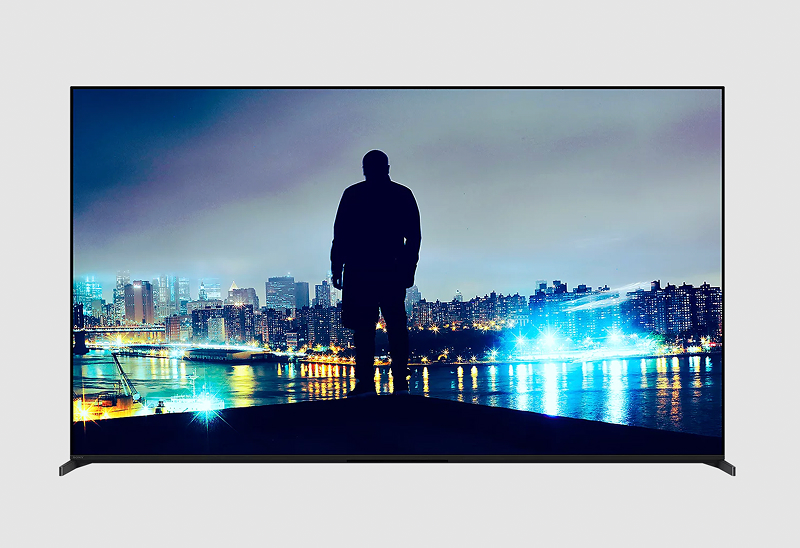Sony BRAVIA 8 II TV – First Look: Flagship QD-OLED Redefines Home Cinema

First Look at what’s new: ultra-bright QD-OLED, XR Processor AI and gamer-friendly features in the Sony BRAVIA 8 II.
Sony has just unveiled its newest high-end television, the BRAVIA 8 II, aiming to bring cinema-grade visuals and immersive sound to the living room. With a next-gen QD-OLED panel, its XR Processor with AI scene recognition and top-tier gaming credentials, this TV attempts to blur the line between studio monitor and home set-up. It matters because TVs have increasingly become the central hub of streaming, gaming and ambient living spaces—and Sony wants to push the category forward. Early impressions suggest it has the right tech, though there may be trade-offs for bright-room use or budget-minded buyers.
Specs & Features
- The BRAVIA 8 II uses a QD-OLED display, enabling “perfect blacks, superior contrast and brilliant colours” according to Sony.
- It is powered by Sony’s XR Processor with AI scene-recognition to optimise picture and audio.
- Colour reproduction is enhanced via XR Triluminos Max (over a billion colours) and XR Clear Image technology.
- For gaming, it supports 4K @ 120Hz, VRR (Variable Refresh Rate), Auto Low Latency Mode (ALLM) and auto HDR tone mapping when paired with a PS5.
- On the audio side, it uses Acoustic Surface Audio+ where the screen itself emits sound, and supports Dolby Vision & Dolby Atmos.
- Compared to previous Sony models (e.g., the 2024 BRAVIA 8), reviewers note ~50% brightness uplift in the 2025 range.
- In terms of sizes: the series is available in 55″ (139 cm) and 65″ (164 cm) models in India.
How it stacks vs competitors:
While Sony claims strong gains, reviews show the peak brightness (≈1,439 nits) still trails premium rivals like the LG G5 or Samsung S95F which exceed 2,000 nits.
Design
The BRAVIA 8 II adheres to Sony’s “Slim One Slate” design, where the screen and bezel merge seamlessly and the rear stand is hidden from view, creating a minimalist aesthetic.
The ultra-thin form and narrow bezel help it blend into a modern living room without dominating it.
On the user-interface front, it runs Google TV, giving access to thousands of apps, voice control, and integration with Apple HomeKit/AirPlay in some regions. While the article focuses on the India launch (which may not list full HDMI counts), the UX emphasises intuitive control and smart home compatibility.
Ergonomics: The use of a face-hugging slim design means less “frame” around screen edges, and the hidden stand helps in wall-mount or floor-stand setups. Remote control is also voice-enabled, enhancing convenience
Performance & Hardware
Picture performance: The QD-OLED panel allows individual pixels to self-illuminate, delivering deep blacks and high contrast, enhancing HDR and cinematic content.
Reviewers measured peak HDR brightness at ~1,439 nits, a significant improvement over last year’s ~817 nits, although still behind some rivals.
Color accuracy and gamut are strong thanks to XR Triluminos Max and other Sony colour technologies, delivering natural hues and fine gradation. Motion handling is aided by XR Motion Clarity systems.
Audio performance: The Acoustic Surface Audio+ technology turns the entire panel into a speaker (via actuators) for aligned visuals and sound. Dolby Atmos and related spatial audio features aim to deliver multi-dimensional sound.
Gaming: With HDMI 2.1, 4K/120Hz, VRR and ALLM, the BRAVIA 8 II is well built for serious gamers—especially console owners like PS5 users. Input lag in reviewers’ tests still measured ~16 ms, which is decent though not lowest in class.
Durability & extras: Sony includes environmental design with recycled materials in some remote models and robust build quality typical of the brand.
Price & Availability
In India the BRAVIA 8 II is launched in 55″ (139 cm) and 65″ (164 cm) screen sizes.
Global pricing is less clearly detailed in the sources, though Sony’s press release notes a wide range from 43″ up to a 98″ class for other models.
For comparison: The related BRAVIA 5 model launched at ₹4,17,990 (for 85″) in India in June 2025.
Expect the BRAVIA 8 II to command a premium over that. The availability is now or shortly after launch, via Sony Centres, major electronics stores and e-commerce portals in India.
What’s Missing / Trade-offs
- Despite the upgrade, peak brightness still lags some rivals which exceed 2,000 nits, possibly making it less optimal for very bright rooms.
- HDMI 2.1 port count may be limited (Sony historically offers fewer compared to rivals). Some reviews cite only two HDMI 2.1 ports in recent Sonys.
- Premium pricing puts it out of reach for many consumers; value-oriented TVs from other brands may offer similar features at lower cost.
- While QD-OLED brings advantages, some gamers or brightness-hungry users might still prefer best-in-class performance from OLED competitors or larger Mini-LEDs.
- As a first-look piece, full long-term reliability, firmware update track record and real-world usability still remain to be proven.
The Sony BRAVIA 8 II impresses with its forward-looking tech: QD-OLED panel, XR AI processing, strong gaming features and refined design. For movie buffs, console gamers and those seeking a premium living-room centerpiece, it ticks many boxes. However, if your room is extremely bright or you demand the absolute top HDR brightness, there may be stronger alternatives. Also, if cost is a major factor, the trade-off may push you to consider slightly less expensive models. In short: Sony remains among the elite in TV tech, and the BRAVIA 8 II reinforces that — but it’s best suited to buyers who prioritise quality and are willing to invest in that experience.